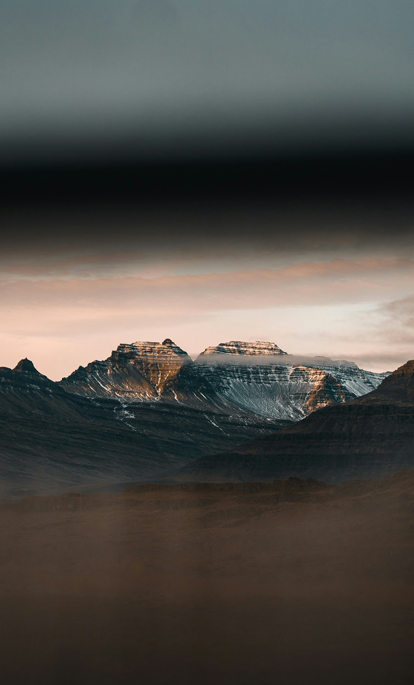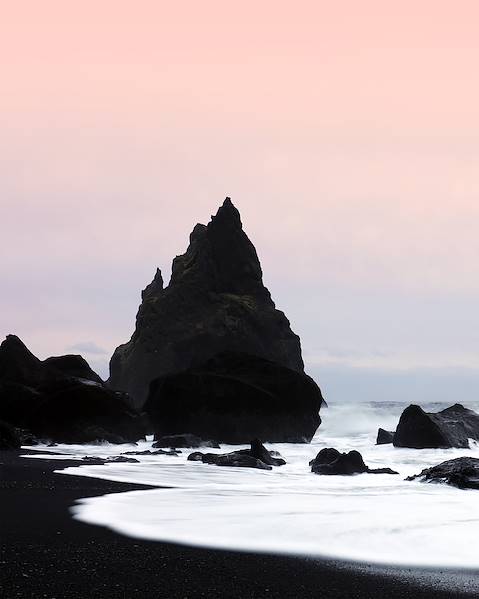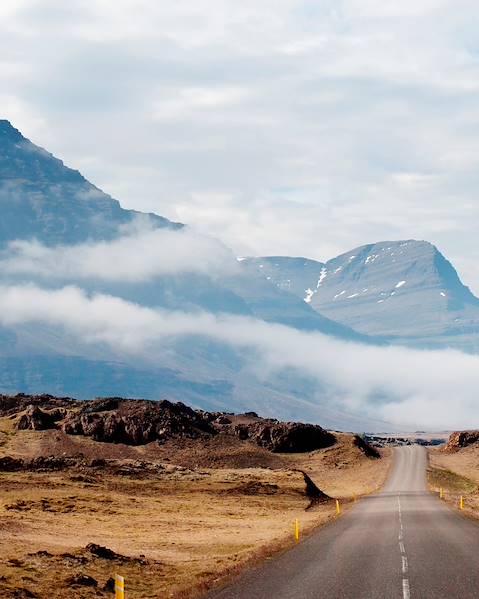Naturally, the name Iceland might give you some indication of what to pop in your suitcase, but knowing what to pack for Iceland very much depends on what time of year you go. The ‘Land of Fire and Ice’ (another clue) is a place where the forces of nature aren’t afraid to flex their muscles; this happens frequently and often without warning. Strappy tops and flip flops won’t really fly during the frosty days of Iceland’s winter, and although not scorching, you might overheat in a puffer jacket when Iceland is filled with summer flowers and endless sunshine…
Travel Essentials
- The obvious essentials: passport, driver’s license, travel documents, payment cards
- Plug adapter (Iceland uses plugs C and F)
- Camera (obvious really, but we don’t want you missing out on capturing Iceland’s stark beauty)
- Sunglasses and suncream are a must, as the glare from the snow is blinding during winter, and when summer comes it feels like the sun never sets
- Iceland is one of Europe’s road trip hot spots, so a road map of the island is a must if you’re heading out on four wheels
Winter
Iceland’s winter typically runs from late October through to mid-April, and often boasts extreme weather conditions. With long nights and short days, as well as temperatures ranging from bitter -5°C to a slightly less bitter 5°C, it is essential that you have the right gear to keep you toasty. Although the Icelandic winter is known for its strong winds, heavy snowfall and frequent storms, it is also famed for being the ultimate time to see Mother Nature’s largest light show: the Northern Lights. Despite the sometimes brutal weather, Iceland's winter is a magical time. The snowy landscapes are breathtakingly beautiful and there are plenty of opportunities for winter sports, such as skiing, snowboarding and snowmobiling. The many hot springs and geothermal pools also provide the perfect place to warm up from the cold. Here is our opinion on what to pack for Iceland in winter:
- Sturdy boots (preferably waterproof), as the ground will be snowy
- Windproof and rainproof coat
- Ski coat and trousers if it’s looking really chilly
- Base layers and thermals
- Jumpers are a must, but if you don’t have enough, treat yourself to a handmade Icelandic woolen jumper
- A hat, gloves and scarf because, well, it’s cold
- Swimmers for warming up in the steaming thermal pools
- Camera to capture the spectacular Northern Lights in their peak season
- Hand and toe warmers are great for those who get frosty extremities
- Suncream and sunnies, as the winter sun (what little of it there is) is still strong
Summer
Summer in Iceland is a wholly warmer affair. It becomes a whimsical land where the sun never sets and the landscape comes to life in a colorful symphony. Picture hiking through lush green valleys, surrounded by vibrant wildflowers and the gentle sounds of a nearby stream. The sun shines brightly overhead, casting a warm glow on the mountains and glaciers in the distance. Temperatures stay between 10°C and 15°C from May to early August, and the sun never truly sets, meaning the entire country is bathed in almost 24-hour sunlight. The warmer temperatures of Iceland's summer also make it the perfect time for outdoor activities. Explore the country's vast glaciers, hike along scenic trails or take a dip in one of the many hot springs scattered throughout the countryside. Here is our opinion on what to pack for Iceland in summer:
- A sleep eye mask will likely be at the top of your list, thanks to the midnight sun making itself known
- Suncream and sunnies as hopefully the sun will be shining
- If bugs aren’t your thing then we would recommend insect repellent, as mozzies are often rife
- A cap for the sun, a warm hat in case there is a chill
- As Iceland’s weather is a tad unpredictable, we’d recommend chucking your raincoat in, just in case
- A camera to snap Iceland’s glowing greenery
Spring and Autumn
Spring and Autumn are Iceland’s shoulder seasons and can often be a little unpredictable. Spring runs from March to May, with an average temperature of 3°C, and brings the beginnings of life and daylight. Whale watching season begins, the Northern Lights disappear for the summer, and the whole island is transformed into a verdant emerald jewel, with fields of lupins and mild weather. Autumn signals the coming of darker days between August and October, with temperatures sitting between 2°C and 7°C. Iceland’s trees turn an ethereal shade of gold and everyone begins to settle down for the beginning of winter. Here is our opinion on what to pack for Iceland in spring and autumn:
- Allergy medication as the famed Icelandic lupins are out in full bloom
- A down coat is the perfect mid-weight layer to keep the chill out
- A camera so that you don’t forget Iceland’s stunning shoulder seasons
- A breathable shirt is a great layer to chuck over a t-shirt for a bit of extra warmth. They also make great make-shift hats, scarves and picnic blankets if all else fails
- Warm boots and winter gear, just in case the cold weather makes a surprise appearance
















